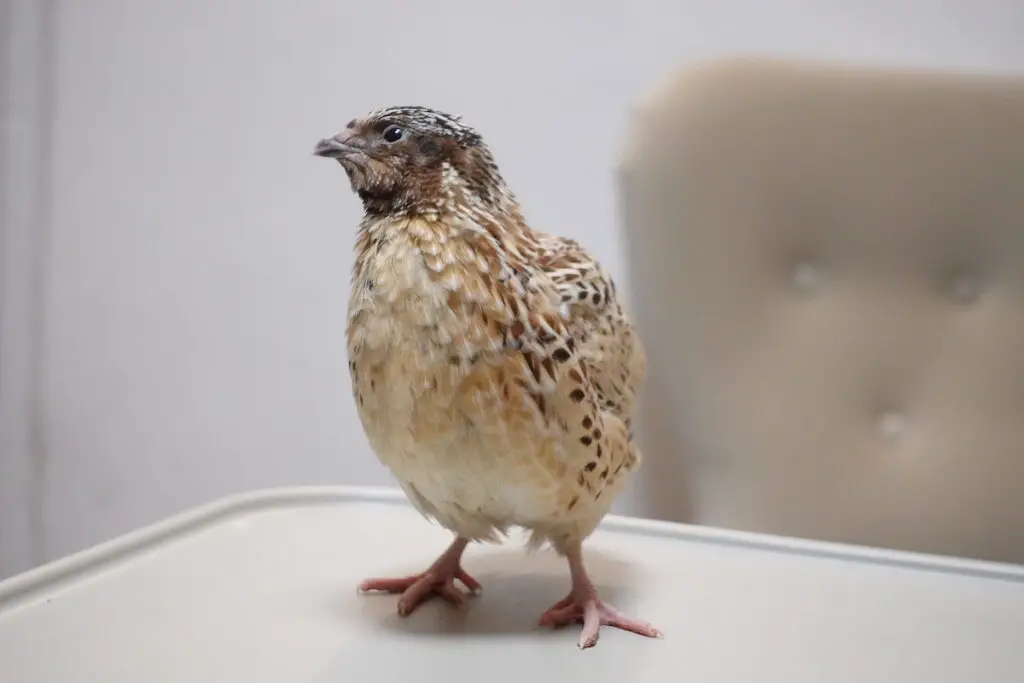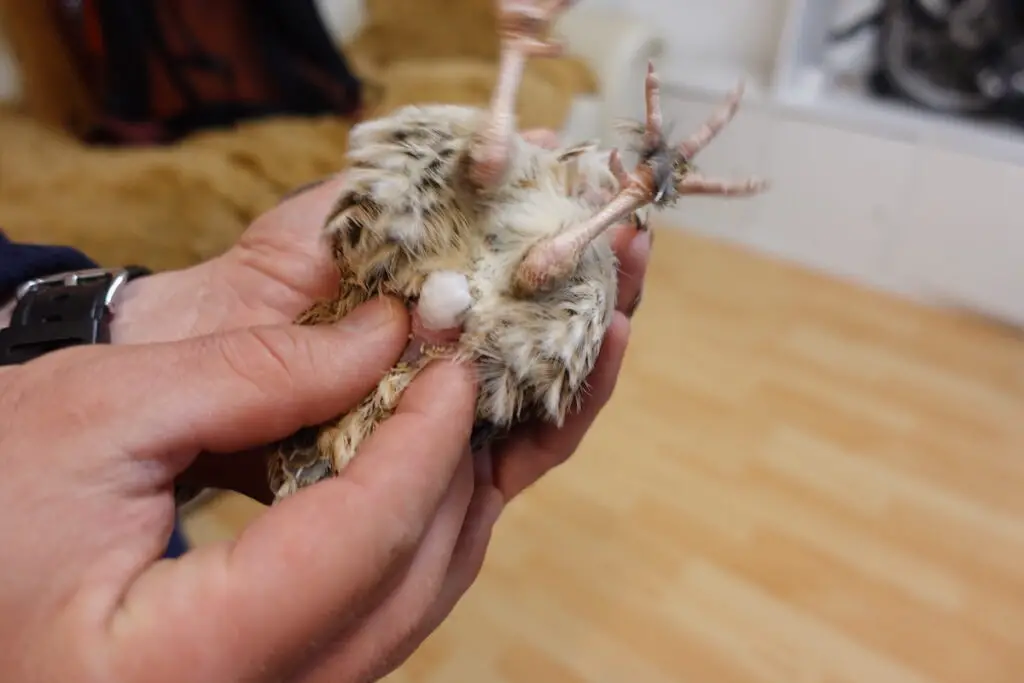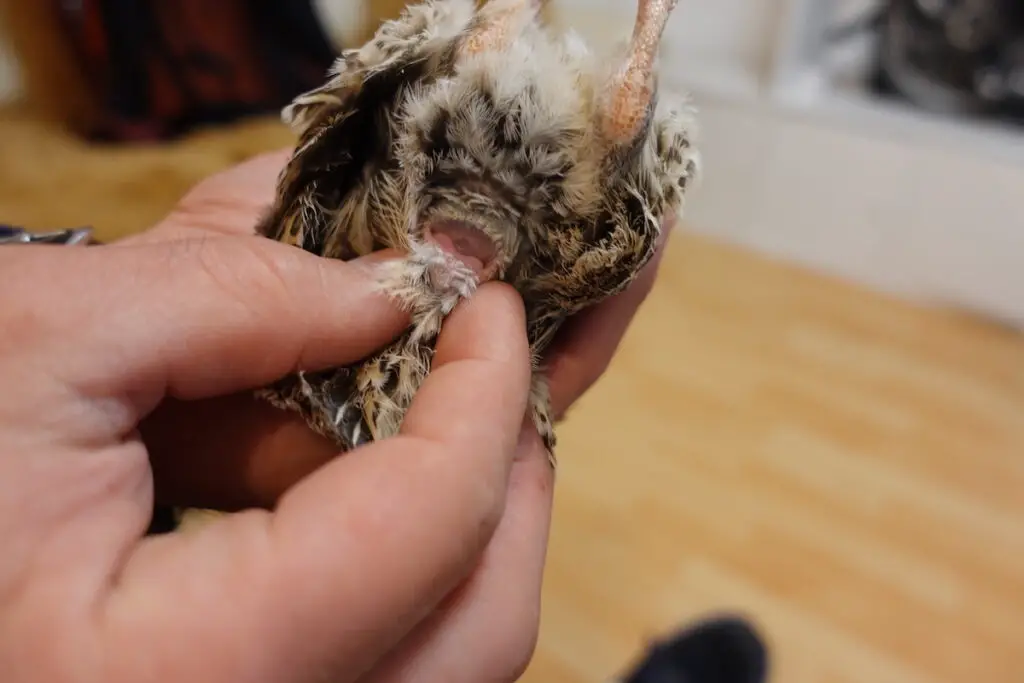When you start keeping quail, unless you want to butcher all of them, you soon realize how important it is to tell apart hens from roosters. If you want to keep them for eggs only, you don’t need any rooster in the cage, and if you want to breed them, you need to ensure the proper male-to-female ratio. Sexing quail can initially seem challenging to the untrained eye, but it’s very simple.
You can sex coturnix quail by their feathers, observing their behavior, listening to the noises they make, or vent sex them. Feather sexing is the simplest method, and it can be done when the quail is three-four weeks old, but it doesn’t work with all quail types. Vent sexing requires some experience and can only be done at 6-7 weeks of age.
Feather sexing
Most common quail types are feather sexable: roosters’ breasts are even color while hens’ breasts are spotted. It’s that simple.
The great thing about feather sexing is that it requires observation, and it can be done in an instant. You don’t need to handle the quail and deal with checking their cloaca, which requires some experience.
Learn how to raise your own quail and have an unlimited supply of eggs and meat.
I also love feather sexing because it can be done at week 3 with many common coturninx quail types, such as Italians and pharaohs.
When baby quail hatch, you can’t distinguish roosters from hens. They all look the same and they all have the same color pattern of feathers. They are either dark or yellow, but this has nothing to do with their sex, but only their variety. (There is a special breeding program where breeders can tell the sex of the quail as soon as they hatch, but it requires a special breeding environment, which is beyond the scope of this post).
You can quickly tell apart hens from roosters as they lose their baby feathers and grow new ones, which happens at around week 3. At this stage, they don’t resemble anything like their baby self.

Feather sexing is completely reliable and accurate, and it renders vent sexing unnecessary in the types of quail that can be feather sexed.
Take a look at the difference between a rooster and a hen.


Vent sexing
Some coturnix quail types, such as Texas A&M’s and Scarlets, are not feather sexable: males and females have the same color feathers on the chest. To know if one is a rooster or a hen, you need to vent sex them.
Vent sexing works by taking the bird in your hand, turning it upside down, and inspecting its cloaca. Quail roosters have a bulge behind their cloacal opening, which contains white foam. When you press on it, the foam is discharged.

Quail hens, on the other hand, don’t have this bulge and if you press them behind the cloaca, nothing comes out.
The cloaca of roosters and hens also looks slightly different. It’s not easy to distinguish them when you do it the first time, but a trained eye can spot the difference easily. Hens’ cloaca is slightly oval, while roosters’ cloaca is more round-shaped.

Vent sexing only works as your birds reach sexual maturity, which is typically after 6-7 weeks of age, but if you’re new, this could even take longer. This is quite later than feather sexing.
Sexing by noise
When a quail crows like a rooster, you know it’s a quail rooster. This is very simple, and always 100% reliable.
I was still new at raising quail, and I had only hatched my second batch of birds. I only wanted to keep the hens for the eggs, and wanted to process all the roosters.
Since there was a mixture of different colors, and not all of them were feather sexable, I vent sexed all of them at eight weeks of age.
I identified 30% of them as roosters and 70% as hens.
The curious thing is that I even vent sexed the those that could be identified by their feathers, and – since I had no practice – I identified some that were clearly male by their appearance as female.
But nature never fails.
After harvesting “all” the roosters, I could hear crowing from the hen cage.
Although it took me some more weeks to identify all the males, I was able to identify some when I caught them in the act of crowing. With some practice, I got better at vent sexing.
Quail hens also make a distinct noise, albeit much more discreetly than roosters. Sometimes you can hear them chirp, which resembles the sound crickets make. Hens also sing a song that you can only hear after they lay an egg.
Sexing by behavior
You can also tell male and female quail apart by observing them.
If you see breeding activity in the cage, it’s a tell-tale sign that you have both roosters and hens, and you can easily spot the rooster. They usually mount the hens, and grab them by the feathers on their back or head to breed them.
Even if you don’t see the act of breeding, but you notice that some of your hens are missing feathers on the back of their head or their back, chances are that you have roosters in the cage. If you don’t want to keep roosters (you don’t need them if you only want to keep hens to lay eggs for eating), this tells you that you need to check your quail for males that slipped through the cracks.

